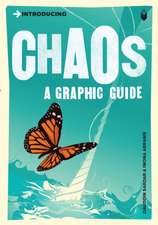The Highway Capacity Manual: A Conceptual and Research History: Volume 1: Uninterrupted Flow: Springer Tracts on Transportation and Traffic, cartea 5
Autor Roger . P Roess, Elena . S Prassasen Limba Engleză Paperback – 3 sep 2016
planning, design, analysis, and operation of virtually any highway traffic facility
in the United States. It has also been widely used abroad, and has spurred the
development of similar manuals in other countries.
The twin concepts of capacity and level of service have been developed
in the manual, and methodologies have been presented that allow highway
traffic facilities to be designed on a common basis, and allow for the analysis of
operational quality under various traffic demand scenarios. The manual also
addresses related pedestrian, bicycle, and transit issues.
This book details the fundamental development of the concepts of
capacity and level of service, and of the specific methodologies developed to
describe them over a wide range of facility types. The book is comprised of two
volumes. Volume 1 (this book) focuses on the development of basic principles,
and their application to uninterrupted flow facilities: freeways, multilane
highways, and two-lane highways. Weaving, merging, and diverging segments
on freeways and multilane highways are also discussed in detail. Volume 2
focuses on interrupted flow facilities: signalized and unsignalized intersections, urban streets and arterials. It is intended to help users of the manual understand how concepts,
approaches, and specific methodologies were developed, and to understand the
underlying principles that each embodies. It is also intended to act as a basic
reference for current and future researchers who will continue to developnew
and improved capacity analysis methodologies for many years to come.
| Toate formatele și edițiile | Preț | Express |
|---|---|---|
| Paperback (1) | 1389.78 lei 43-57 zile | |
| Springer International Publishing – 3 sep 2016 | 1389.78 lei 43-57 zile | |
| Hardback (1) | 1394.03 lei 43-57 zile | |
| Springer International Publishing – 22 apr 2014 | 1394.03 lei 43-57 zile |
Din seria Springer Tracts on Transportation and Traffic
- 18%
 Preț: 1403.67 lei
Preț: 1403.67 lei - 15%
 Preț: 647.92 lei
Preț: 647.92 lei - 18%
 Preț: 1241.25 lei
Preț: 1241.25 lei - 15%
 Preț: 642.03 lei
Preț: 642.03 lei - 18%
 Preț: 1011.27 lei
Preț: 1011.27 lei - 18%
 Preț: 948.79 lei
Preț: 948.79 lei - 18%
 Preț: 725.26 lei
Preț: 725.26 lei - 18%
 Preț: 1105.37 lei
Preț: 1105.37 lei - 15%
 Preț: 633.68 lei
Preț: 633.68 lei - 18%
 Preț: 1107.88 lei
Preț: 1107.88 lei - 15%
 Preț: 579.67 lei
Preț: 579.67 lei - 18%
 Preț: 945.30 lei
Preț: 945.30 lei - 18%
 Preț: 956.81 lei
Preț: 956.81 lei - 18%
 Preț: 786.01 lei
Preț: 786.01 lei - 18%
 Preț: 1111.04 lei
Preț: 1111.04 lei - 19%
 Preț: 554.49 lei
Preț: 554.49 lei - 18%
 Preț: 1394.03 lei
Preț: 1394.03 lei - 15%
 Preț: 643.00 lei
Preț: 643.00 lei - 15%
 Preț: 653.14 lei
Preț: 653.14 lei - 15%
 Preț: 639.41 lei
Preț: 639.41 lei - 15%
 Preț: 643.99 lei
Preț: 643.99 lei
Preț: 1389.78 lei
Preț vechi: 1694.86 lei
-18% Nou
Puncte Express: 2085
Preț estimativ în valută:
265.94€ • 278.36$ • 221.34£
265.94€ • 278.36$ • 221.34£
Carte tipărită la comandă
Livrare economică 31 martie-14 aprilie
Preluare comenzi: 021 569.72.76
Specificații
ISBN-13: 9783319358222
ISBN-10: 3319358227
Pagini: 498
Ilustrații: XXVIII, 470 p. 104 illus., 45 illus. in color.
Dimensiuni: 155 x 235 x 26 mm
Greutate: 0.69 kg
Ediția:Softcover reprint of the original 1st ed. 2014
Editura: Springer International Publishing
Colecția Springer
Seria Springer Tracts on Transportation and Traffic
Locul publicării:Cham, Switzerland
ISBN-10: 3319358227
Pagini: 498
Ilustrații: XXVIII, 470 p. 104 illus., 45 illus. in color.
Dimensiuni: 155 x 235 x 26 mm
Greutate: 0.69 kg
Ediția:Softcover reprint of the original 1st ed. 2014
Editura: Springer International Publishing
Colecția Springer
Seria Springer Tracts on Transportation and Traffic
Locul publicării:Cham, Switzerland
Cuprins
An Overview of the Highway Capacity Manual and Its History.- Highway Capacity Manual and Its History .- The Fundamental Concept of Capacity.- The Fundamental Concept of Level of Service.- Passenger Car Equivalents and Other Adjustment Factors.- Overview of Uninterrupted Flow Methodologies of the Highway Capacity Manual.- Speed-Flow-Density Relationships: The Fundamental 145 Basis of Uninterrupted Flow Analysis.- Basic Freeway and Multilane Highway Segments.- Analysis of Weaving Segments.- Analysis of Merge and Diverge Segments.- Analysis of Two-Lane, Two-Way Highways.- The Future of the Highway Capacity Manual. Highway Capacity Manual.
Textul de pe ultima copertă
Since 1950, the Highway Capacity Manual has been a standard used in the
planning, design, analysis, and operation of virtually any highway traffic facility
in the United States. It has also been widely used abroad, and has spurred the
development of similar manuals in other countries.
The twin concepts of capacity and level of service have been developed
in the manual, and methodologies have been presented that allow highway
traffic facilities to be designed on a common basis, and allow for the analysis of
operational quality under various traffic demand scenarios. The manual also
addresses related pedestrian, bicycle, and transit issues.
This book details the fundamental development of the concepts of
capacity and level of service, and of the specific methodologies developed to
describe them over a wide range of facility types. The book is comprised of two
volumes. Volume 1 (this book) focuses on the development of basic principles,
and their application to uninterrupted flow facilities: freeways, multilane
highways, and two-lane highways. Weaving, merging, and diverging segments
on freeways and multilane highways are also discussed in detail. Volume 2
focuses on interrupted flow facilities: signalized and unsignalized intersections, urban streets and arterials. It is intended to help users of the manual understand how concepts,
approaches, and specific methodologies were developed, and to understand the
underlying principles that each embodies. It is also intended to act as a basic
reference for current and future researchers who will continue to developnew
and improved capacity analysis methodologies for many years to come.
planning, design, analysis, and operation of virtually any highway traffic facility
in the United States. It has also been widely used abroad, and has spurred the
development of similar manuals in other countries.
The twin concepts of capacity and level of service have been developed
in the manual, and methodologies have been presented that allow highway
traffic facilities to be designed on a common basis, and allow for the analysis of
operational quality under various traffic demand scenarios. The manual also
addresses related pedestrian, bicycle, and transit issues.
This book details the fundamental development of the concepts of
capacity and level of service, and of the specific methodologies developed to
describe them over a wide range of facility types. The book is comprised of two
volumes. Volume 1 (this book) focuses on the development of basic principles,
and their application to uninterrupted flow facilities: freeways, multilane
highways, and two-lane highways. Weaving, merging, and diverging segments
on freeways and multilane highways are also discussed in detail. Volume 2
focuses on interrupted flow facilities: signalized and unsignalized intersections, urban streets and arterials. It is intended to help users of the manual understand how concepts,
approaches, and specific methodologies were developed, and to understand the
underlying principles that each embodies. It is also intended to act as a basic
reference for current and future researchers who will continue to developnew
and improved capacity analysis methodologies for many years to come.
Caracteristici
Presents an overview of the research, theory and practice of highway capacity analysis The fundamental concepts and research that have produced the methods now applied to the US roads and highways are presented in straightforward language with illustrations Focus on Uninterrupted Flow












